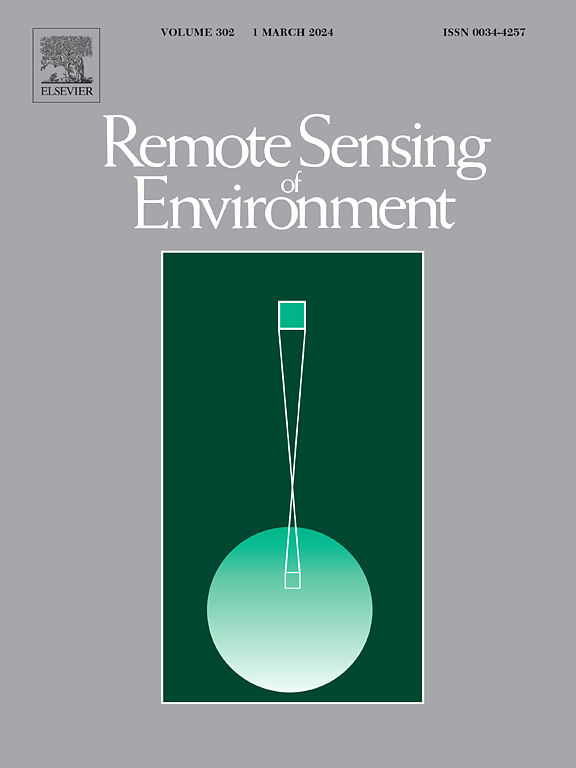水生环境中塑料垃圾远程检测的逻辑:再访
IF 11.4
1区 地球科学
Q1 ENVIRONMENTAL SCIENCES
引用次数: 0
摘要
在过去的十年里,利用卫星测量对海洋和淡水环境中的塑料垃圾进行远程检测已经成为一个热门的研究课题,许多论文都展示了“成功”的算法开发和应用。然而,这些结果中的许多似乎需要一些重新审视,因为在逻辑中,A到B的因果关系(即,A =>;B)不会导致B =>;在实践中,即使塑料可以从控制实验中导致某种类型的信号异常(例如,光谱,空间,后向散射),但从自然环境中检测到的相同异常不能用于推断塑料,除非其他可能的原因都可以排除。考虑到非塑料漂浮物在水生环境中更为普遍,这一点尤其正确。不幸的是,即使不是大多数出版物,也有许多出版物缺少这种逻辑。在这里,我利用各种类型的漂浮物的光谱反射率,并通过几个例子的演示,说明了为什么这种逻辑在塑料垃圾的远程检测中是至关重要的,以及为什么像素平均和减法是光谱识别多波段光学遥感图像中信号异常的必要步骤。有人认为,除非使用成像光谱或其他手段排除其他可能性,否则将检测到的信号异常归因于塑料垃圾还为时过早。毕竟,并不是每个异常像素都必然是由于垃圾,也不是每个垃圾像素都必然是由于塑料,除非证明不是这样。本文章由计算机程序翻译,如有差异,请以英文原文为准。


On the logic of remote detection of plastic litter in the aquatic environments: A revisit
Remote detection of plastic litter in both marine and freshwater environments using satellite measurements has become a hot research topic in the past decade, where numerous papers have shown “successful” algorithm development and applications. However, many of these results appear to need some revisits because, in logic, the causality of A to B (i.e., A => B) does not lead to the inference of B => A unless A is the only reason to cause B. In practice, even though plastics can lead to a certain type of signal anomaly (e.g., spectral, spatial, backscattering) from controlled experiments, the same anomaly detected from the natural environments cannot be used to infer plastics unless other possible reasons can all be ruled out. This is especially true when considering that non-plastic floating matters are much more ubiquitous in the aquatic environments. Unfortunately, this logic has been missing in many, if not most, publications. Here, using spectral reflectances of various types of floating matters and through demonstrations of several examples, I show why such logic is critical in remote detection of plastic litter and why pixel averaging and subtraction are necessary steps to spectrally discriminate the signal anomaly in multi-band optical remote sensing imagery. It is argued that unless other possibilities are ruled out using imaging spectroscopy or other means, it is premature to attribute the detected signal anomaly to plastic litter. After all, not every anomaly pixel is necessarily due to litter, and not every litter pixel is necessarily due to plastics unless proven otherwise.
求助全文
通过发布文献求助,成功后即可免费获取论文全文。
去求助
来源期刊

Remote Sensing of Environment
环境科学-成像科学与照相技术
CiteScore
25.10
自引率
8.90%
发文量
455
审稿时长
53 days
期刊介绍:
Remote Sensing of Environment (RSE) serves the Earth observation community by disseminating results on the theory, science, applications, and technology that contribute to advancing the field of remote sensing. With a thoroughly interdisciplinary approach, RSE encompasses terrestrial, oceanic, and atmospheric sensing.
The journal emphasizes biophysical and quantitative approaches to remote sensing at local to global scales, covering a diverse range of applications and techniques.
RSE serves as a vital platform for the exchange of knowledge and advancements in the dynamic field of remote sensing.
 求助内容:
求助内容: 应助结果提醒方式:
应助结果提醒方式:


